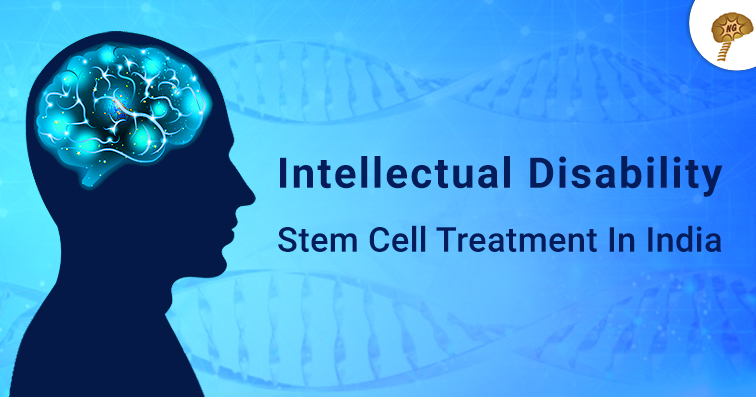
Intellectual disability, now more commonly known as intellectual disability or general learning disability, is a generalised disorder of neural development. It is characterised by a significantly impaired intellectual and adaptive functioning. It is generally defined by having an IQ under 70 along with deficits in two or more behaviours that affect the everyday general living. The definition includes both a mental functioning component as well as one relating to a person’s ability to function in their environments. Intellectual disability affects approximately 2 to 3 percent of the general population.
In India, an increasingly popular method is stem cell therapy. At the NeuroGen Brain and Spine Institute located in Mumbai, stem cell treatment for intellectual disability can be performed. It has already shown positive results in previous trials.
The onset of intellectual disability occurs during childhood, and the main symptoms are usually deficits in mental abilities, social skills, and essential activities required for daily living when compared with same aged peers. There no physical signs of the disability. The level of impairment can vary in severity for each individual. Some of the signs of intellectual disability include:
- Milestones in motor skills development like sitting, crawling and walking may be delayed or there may be outright failure to reach them
- Lateness in learning to talk
- Difficulties with speech and language even after starting to talk
- A difficulty with self-care skills (putting on clothes, washing, and feeding themselves)
- Poor problem-solving or planning ability
- Behavioural and social issues
- Failure to adjust and adapt to new situations
- Problems with understanding and following social cues
- Problems keeping up with other children in school
- Continued infant-like behaviour, or behaviour that seems typical of a younger child
There are four different levels of severity of intellectual disability ranging from mild to profound.
- Mild Intellectual Disability: About 85 percent of the population with intellectual disability has this form of severity. These individuals can generally learn how to read, write, and develop math skills up to a third- or sixth-grade level. They may have jobs and live independently.
- Moderate Intellectual Disability: About 10 percent of the intellectually disabled population has this form of severity. They may be able to learn basic reading and writing, as well as functional skills such as safety and self-help. They usually require some form of supervision or oversight.
- Severe Intellectual Disability: 5 percent of those with the disability have this form. Individuals probably are not able to read and write, although they may have learned self-help skills and daily routines. They require supervision in their daily activities and living environment.
- Profound Intellectual Disability: Only one percent of the population has this form of severity. People who have it require intensive support. They may be able to verbally or non-verbally communicate. May have ongoing medical issues that require continuous nursing and therapy.
As we can see, there is a great need for treating the higher severity levels of intellectual disability because of its debilitating nature. Methods like special education, cognitive behaviour therapy, and pharmacotherapy are commonly used to help them develop skills to live independently.
Stem cell treatment for intellectual disability is one of the new techniques that can address the underlying cause of intellectual disability at the molecular and cellular level.
At NeuroGen Hospital, nearly 300 children and adults have received stem cell treatment for intellectual disability, and most cases saw a tremendous improvement. An improved attention span, better concentration, faster processing speed, reduced hyperactivity and faster learning were observed after the treatment.








